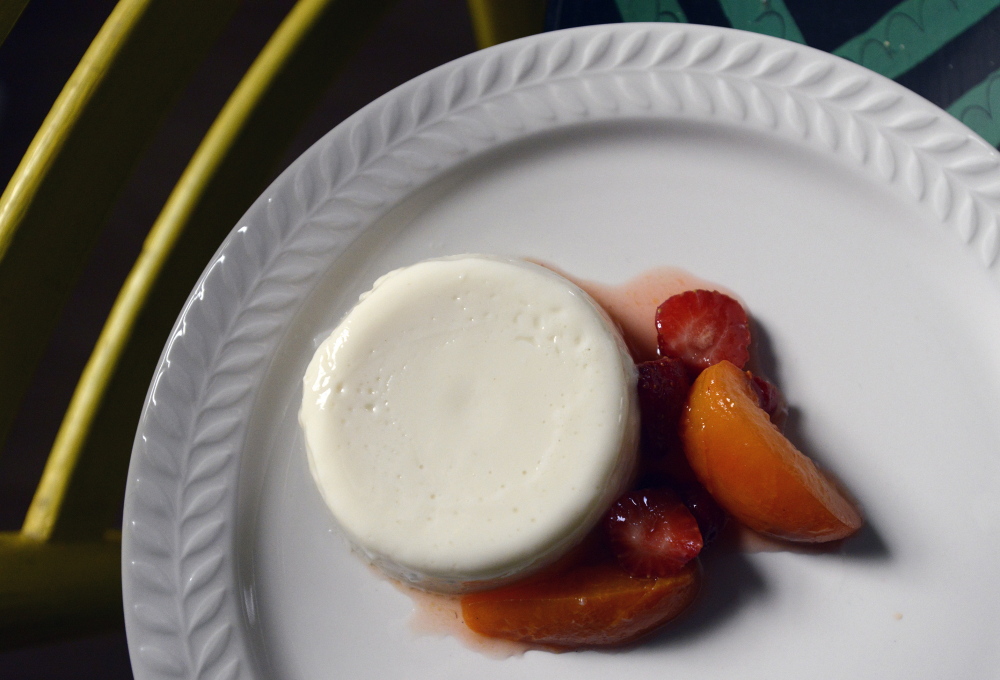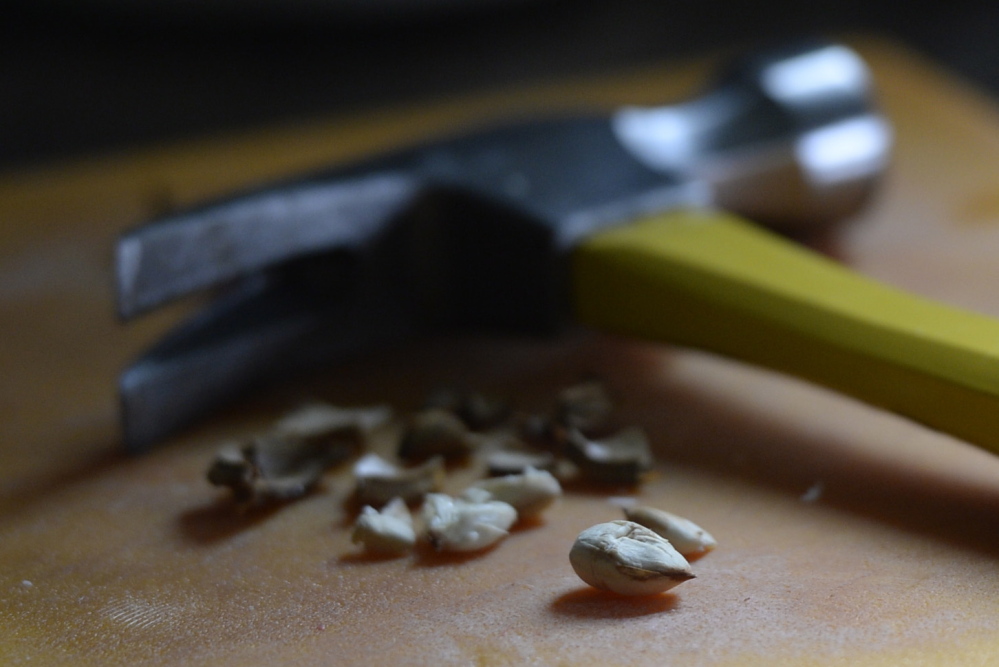Editor’s Note: Christine Burns Rudalevige is on vacation; she will return next week.
Some years ago, I had the good luck to spend seven years working in a small office with now-James Beard Foundation Executive Vice President Mitchell Davis. He was not only a terrific boss (and friend), but he knew more about food than just about anyone else I have met before or since. Using apricot pits to make apricot jam is a trick – apparently common in France – that he taught me long ago.
One of the fun things about making jam is that the finished jars fill the jam maker with almost professional pride: Did I really make those gorgeous, sparkling jars? The first time I made apricot pit jam, I had that feeling in spades. (Just add a couple apricot kernels to the bubbling fruit. The resulting jam tastes shockingly good.)
The pits – actually the kernels – have a faintly bitter taste of almonds, neither as overpowering nor as cloying as almond extract can be. (That said, almond extract is often made from apricot kernels.) At this time of year, I save all my apricot pits, and cherry pits, too, freezing them if I can’t use them right away or don’t have enough. Then I heat them with cream and let the mixture steep. I use the infused cream for whipped cream or any kind of custard dessert – ice cream, pots de creme, crème brûlée, panna cotta. The French use apricot kernels to make a liquor called Creme de Noyaux; the kernels also show up in amaretto, while in the Middle East, the spice mahlab, used in cookies and cakes, is made from cherry pits.
Cooking with food that used to be wasted – fruit and vegetable peels, vegetable stems, trash fish – has become fashionable in the United States as chefs and the rest of us eat increasingly farm-to-table and worry about food waste and the Earth’s dwindling resources. But the truth is I don’t bake with apricot kernels and cherry pits in order to feel either virtuous or stylish. I use them, first, because they add a lovely haunting dimension to food and, second, because I think it’s a neat trick when food offers a culinary twofer: beets and beet greens, egg whites and egg yolks, dill sprigs and dill seed and – to the point here – fruit and pits.
To get the kernel out of the apricot, you must smash the pit with a hammer (or use a nut cracker). The kernel looks like an almond, which is not too surprising once you know that apricots and almonds – and other stone fruits – all belong to the prunus family and, yes, you can use peach and plum pits, too.
Whoa, some of you may be saying. Don’t apricot kernels contain cyanide? Yes, they do, but sweet apricots – the kind you are buying at the store – contain much lower levels than bitter apricots, and in any case, infusing food with their flavor offers little risk (as opposed to eating them outright, and even in that case you’d have to eat an awful lot, experts say). Still, what I am scared of is car crashes; if you are scared of apricot pits as flavoring agent, stick to apple pie or chocolate cake.
APRICOT AND CHERRY PIT PANNA COTTA
This recipe is loosely adapted from David Lebovitz’s “Ready for Dessert.” You will need an unusual kitchen tool to make it: a hammer. I used strawberries in the compote because the day before I made the panna cotta, I went strawberry picking and got a little (OK, a lot) carried away. Use whatever fruit you like; stone fruits and cherries are especially nice with this particular panna cotta.
Serves 4
PANNA COTTA:
1 2/3 cups half-and-half
15 to 20 apricot pits
Handful cherry pits, washed
1 envelope unflavored gelatin
3/4 cup sugar
2/3 cup buttermilk
APRICOT-STRAWBERRY COMPOTE
1/3 cup vanilla sugar
A few apricot kernels
3 apricots
About 1 cup whole or quartered strawberries
Lightly grease four 4- to 6-ounce ramekins with unflavored vegetable oil.
Using a hammer, smash the apricot pits to release the inside kernels, which resemble almonds. It takes a real blow to release the kernels. It’s nice to get some whole kernels; more likely, however, you’ll get what amounts to chopped (or smashed) kernels, which is fine.
To make the panna cotta, in a medium saucepan, heat the half-and-half with the apricot kernels and cherry pits until scalding. Watch carefully and don’t let the cream boil. Let the dairy mixture sit, covered, at least an hour to steep. (Overnight is also fine.)
Pour 3 tablespoons cold water into a medium bowl and sprinkle evenly with the gelatin. Let the gelatin soften and swell for 5 minutes. Reheat the half-and-half with the sugar until warm and the sugar has dissolved. Pour through a fine-mesh strainer into the bowl with the gelatin. Discard the seeds and pits in the strainer. Stir the cream mixture until the gelatin dissolves. Let the mixture cool slightly (to avoid curdling the buttermilk), then stir in the buttermilk.
Divide the mixture up among the prepared ramekins. Cover with plastic wrap. Chill at least 6 hours.
Meanwhile, make the compote. I’m pretty casual about compote – I taste a lot and never measure and toss in whatever fruit I happen to have around. If you want to follow a recipe, however, heat 1/3 cup water, the vanilla sugar and the apricot kernels in a small saucepan until the sugar dissolves, a matter of a minute or so. Cut the apricots into 6 or so wedges apiece. Add them to the hot sugar syrup. Simmer over low heat until tender but still bright and holding their shape, some 5 minutes. Let cool slightly. Add the strawberries – small berries whole and larger berries halved or quartered. Chill the compote. Remove the apricot kernels if you like.
Serve the panna cotta with the compote in the ramekins or unmold the individual ramekins and serve each in a pool of compote.
Send questions/comments to the editors.




